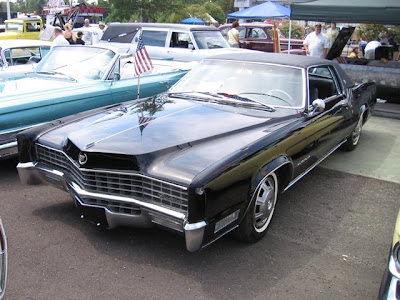
Imperial was Chrysler's most luxurious brand from 1955 to 1975, and with Plymouth, Dodge, DeSoto and Chrysler, originally gave Chrysler a 5-brand structure like General Motors. DeSoto's last year was 1961, but Imperial hung on. Imperial's volume was always lower than competitors Cadillac and Lincoln, making them somewhat rare today. This 1963 Imperial Custom Sedan was spotted by chance parked in a residential neighborhood.

1963 was the last year for this body style, which debuted in 1961. The most interesting styling element of the 1961-1963 Imperials is the individual freestanding bullet headlights set in recessed alcoves in the fenders. This was a unique idea meant to recall the freestanding headlights of the classic cars of the 1930s, but the way the top of the fenders extends over them kind-of defeats the point and makes washing and detailing more difficult. But it gives these rare cars a special character.

The 1963 Imperials were actually a bit more restrained than the previous two years. The 1961 model featured large tailfins, which were already going out of style at that point. For 1962, the fins were cut down significantly, but cigar-shaped variations of Imperial's trademark gunsight taillights were perched on top of them. The 1963 models abandoned the gunsight theme and had more conventional taillights incorporated in the trailing edge of what remained of the tailfins.

Imperials from this era were available with an optional tire-shaped piece of trim fastened to the trunk lid, meant to recall the days when cars carried the spare tires on the back. This trim had originated as an option in 1957 and persisted until 1963, though this model is not equipped with it. In 1964 the "fake spare" motif became standard, incorporated into the shape of the trunk in a more restrained fashion, ala Lincoln's 56-57 Continental Mark II and the later Mark III that would debut in 1968.




















































